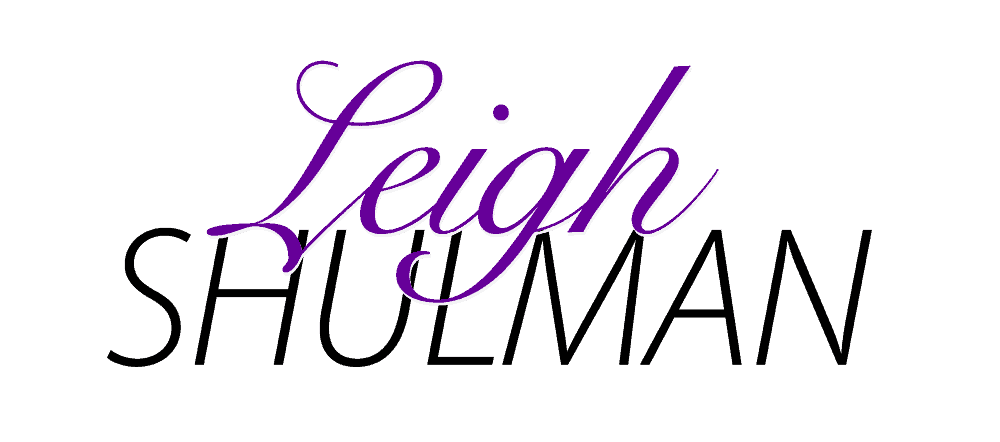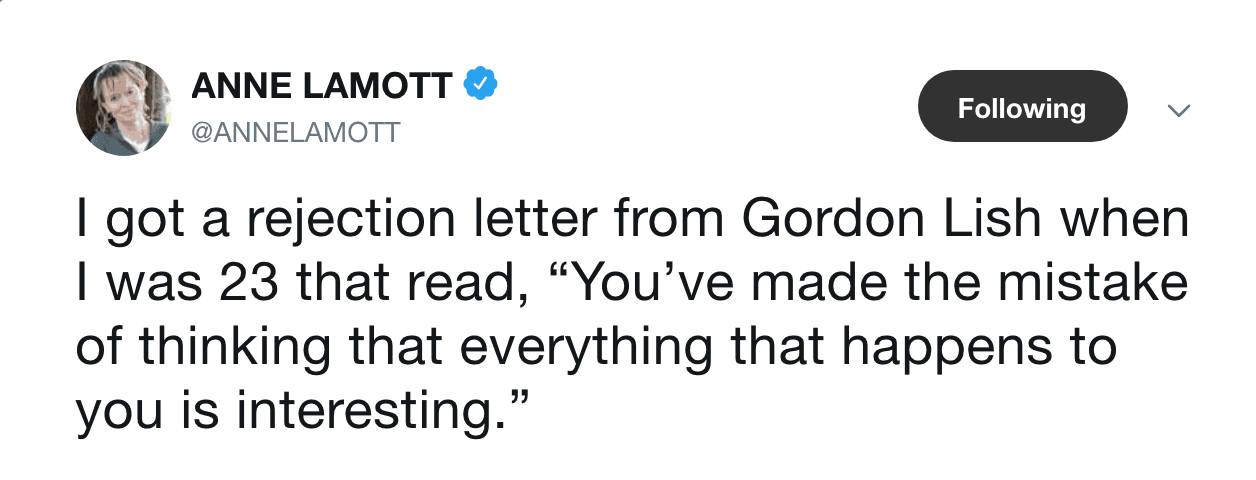If you are a writer, you will be rejected. You will be rejected many, many times. As a side effect of rejection, you will feel like a failure, too. There is no maybe about this. Editors, agents, publishers, potential mentors, grants, scholarships, residencies and so many other people will slam doors in your face leaving you feeling like a total, freakin’ loser.
This is why you can’t make a sudden resolution to be a writer. New year resolutions, the sort that you decide one day to suddenly act and be entirely different the following day, do not work. Taking on a new habit is a practice. You’ll do an amazing job one day. You’ll suck the next. You’ll have highs and lows.
It’s too easy to give up if you don’t prepare for those lows. This is my advice to you so you can prepare for rejection and turn failure on its head. You can make them work for you, because rejection and failure help you grow in ways that success never will.
The science of rejection
Rejection takes us back in time to when humans and pre-humans lived in small groups. They hunted and gathered for survival. Just staying alive was a fulltime job, and rejection from the group, unless you happened to be Ayla from Jean Auel’s The Clan of the Cave Bear, meant certain death. Even though humans have evolved in many ways, the brain still cowers in the face of rejection, because somewhere deep in our reptilian brains, those old survival instincts kick in and you believe that rejection means you’re going to die.
Even when you rationally know you’re going to be fine, instinct says otherwise. That’s why you want to disappear when you’re left at the altar or shafted for your dream job or agent after agent reads your book only to dash off a quick note saying “I’ll pass.”
Rejection won’t kill you, but it sure as hell feels like it can. Literally. Rejection is the only human emotion that registers in the body as physical pain. If you take a painkiller before a rejection, it lessens its impact.
This means you can train both your body and brain to manage the pain of rejection. You can shift your instinctual responses and divert the rejection impulse to run away and instead keep you focused, inspired and moving forward.
Seek out rejection
Your natural inclination is to avoid rejection. Instead, go in search of rejection. Get to know it so well that any pain and fear (almost) disappears, and you instead allow rejection to work for you instead of beating you down.
Lithub published a piece a couple years ago urging us to collect 100 rejections a year:
Collect rejections. Set rejection goals. I know someone who shoots for one hundred rejections in a year, because if you work that hard to get so many rejections, you’re sure to get a few acceptances, too.
It also means you’ve finished enough pieces of writing to send out to publications so you can actually get those rejections. It means you’re working, creating, finishing and moving on to create more.
Isn’t this the crux of being a writer, anyway? Actually writing, that is.
When you shift your focus to finishing and sending, rejection becomes a prize, a reminder that you are writing like a motherfucker. Do this for a year and when you look back, you won’t see all the rejections, you’ll see what you’ve accomplished.
Put failure into perspective by knowing your odds
Let’s say you’re pitching editors, and you’re getting rejected 60% of the time. That’s a failing grade when you’re in school. It is not, however, failing in the writing world.
The average writer who is writing solid pitches, doing their research and writing well will be rejected 80% of the time. So for every 100 pitches you send to commercial publications, you will only receive 20 acceptances. That means, 20% is a pretty good rate.
If you’re pitching publications that pay extremely well and have a huge readership, your percentages are even lower. If you’re pitching companies for copywriting or to literary journals, your odds drop even further. Now let’s go back to that 60% pitching rate. It’s not looking so bad anymore, is it?
Writing is a numbers game. When you focus on the numbers and not the emotion connected to rejection, you can determine exactly what to do to improve.Ruth Dawkins, who writes features for The Washington Post, The Guardian and more, shared her process for pitching, being rejected and then pitching again until your article finds a home.
99% of the time it’s not about you
Sometimes you’ll be rejected simply because what you wrote doesn’t fit what’s needed. It’s not a reflection of you or statement about your writing or future.
Jaimie Seaton, a twenty-two-year veteran writer whose work has been published online and in print for Newsweek, The Guardian, CNN, O, The Oprah Magazine among many others, reminds us it’s not personal.
“I remember that not all pieces are the right fit for all pubs,” she says. “I see if I can improve the pitch or the piece. I try to do better. I realize that this business is subjective. I take the long view. I always fall back on this incident: An essay pitch was rejected by a few outlets. I wrote the piece, The Washington Post On Parenting took it, and it went viral. You just have to keep working hard.”
Take action with a rejection ritual
The mere thought of rejection keeps people from writing and submitting their work. Actual rejection hurts even more. It shuts us down, makes us wish we never tried in the first place.
It’s important to act before you allow the sedentary power of rejection to set in. Mel Robbins discusses how this works in her book The Five Second Rule. When you have the impetus to act, you have five seconds between the thought and the action to solidify your direction. If you act, you put yourself on the path to create and grow. If you do nothing, you continue doing nothing.
Implement the five-second rule when rejection hits, so you act to move forward instead of shutting down.
Judy Mollens Waters, author of six books shares her simple secret of dealing with rejection.
I start something new. Get right back at it.
Mollens Waters immediately returns to the page and starts writing, because she understands the difference between writing and publishing. She’s also the author of countless articles and six book, the most recent The Natural Order of Things, the story of a young single mom taking care of her child.
Writing is a creative and mostly solitary act. Publishing is business. It’s letting go of what you’ve created and sharing it with others, and sharing risks rejection.
This became clear the day I published my book The Writer’s Roadmap: Paving the Way To Your Ideal Writing Life. That’s also why I started writing my next book before my publication date.
I have a rejection ritual when I’m pitching articles to editors. Before I send any piece of writing or pitch out to an editor or publication, I make a list of three or so places I’d like to publish the piece of writing. When I receive a rejection, I rework the pitch and send to the next place on my list. That way, I’m always taking action to publish.
Retrain your brain to see the good
Negative events stick in the human brain longer and with more tenacity than positive ones. This also goes back to our early days, when the berries growing on a bush were of less importance than the predator who might be hiding in the leaves. Berries are great, but not if you’re dead. Our negativity kept us alive.
In our current lion-less setting, an impulse to focus on the negative holds us back from doing things that may lead to rejection. Jennifer Goforth Gregory, expert copywriter and author, combats this by keeping a positive e-mail folder where she saves all the nice things editors say about her work. When she gets negative feedback, she starts reading those e-mails.
I have a similar folder of e-mails and screenshots on my desktop. I call it my Happy Files.
Don’t sit alone in rejection misery
Rejection is one of the loneliest feelings in the world. Try reading the #sharemyrejection hashtag on Twitter, and you’ll quickly learn you are far from alone.
At first, you’ll feel vulnerable and exposed showing your rejections, but it’s also an incredible opportunity to be inspired. You’ll see how others turned soul-crushing rejection into growth by proving their detractors wrong. You’ll see how important it is to trust yourself and believe in yourself enough to keep writing no matter what others say.
Rejection as the seed of feedback
Imagine if Gordon Lish, one of the most famous literary writers and editors in the world, said this to you. The biggest fear most writers have is that no one wants to read what we have to say, and I don’t know how Anne Lamott kept writing after such careless words. That said, useful feedback sometimes comes in shitty packages and this is a perfect example.
It’s not your particular story that’s important, it’s how your story connects to other people and their experiences. It’s a shift in view that makes the difference between writing in your journal and a piece of writing that connects to a core human truth. There aren’t many core human truths, but when you hit on them — and you will — your story will reach out from the pages where you write and to people living all over the world and into the future. The key is to find the important points of your story, the salient details instead of sharing every single idea and thought.
The same applies other kinds of rejection that helps you improve your writing. Your story was rejected? Take another look, ask advice, do some research. Find a direction to move ahead.
Susan Shapiro, an award-winning writing professor, freelancer and best selling author of twelve books (her most recent is The Byline Bible: Get Published In Five Weeks) offers her advice to focus on improving your writing instead of wallowing in rejection.
Here’s what helps me: great weekly writing workshop where I share what happened and bring in the work to get advice on revisions. Shrink appointment. Or call a mentor to ask advice — this once led me to sell a killed piece to the New York Times Magazine that launched a book.
Ignore that which doesn’t serve you
When rejection is nothing more than hurtful and tears you down with absolutely no redeeming value or way to improve, you can safely and completely ignore.
This is a form of self-care. Do not let the errant and ugly opinions of others harm you, because maybe you remind them of a girl who rejected them in high school or someone cut them off at a traffic light or they’ve recently lost someone they love dearly and all that pain has channeled itself through a myriad of thoughts, days and misunderstandings to land squarely on your writing and you.
There’s a saying that has been attributed to everyone from Paulo Coelho to Deepak Chopra to Regina Brett to simply Unknown:
What other people think of you is none of your business.
We never know why people say what they say, and even when their words are cutting and reflect your very worst fears about yourself, you cannot fall prey to believing what others think of you. If someone tells you your writing is worth nothing, it doesn’t make it so.
Every writer has been rejected, at times with incredible cruelty. Rudyard Kipling was told he “doesn’t know how to use the English language.” Louisa May Alcott was told to stick to teaching. Stephen King was told science fiction and negative utopias do not sell. Sylvia Plath was told she had no genuine talent. JK Rowling overcame rejection to create her Harry Potter empire!
Just because someone who seems to be an authority says something, doesn’t mean it’s an absolute truth. Trends in literature change as the doors of who is considered fit to be a published open wider to allow the stories of more women, people of color and other voices who have for so long been pushed to the sidelines and marginalized. Imagine if these and the other writers who have been rudely, painfully, repeatedly rejected stopped writing because of what someone else said.
That’s not to say rejection won’t still sting, and there will be times you’ll wonder if you should perhaps pack it in already. We’ve all been rejected, and if you’re seeing our writing, that means we kept going in spite of it.
You want to write? This is what you must do as well.
As for rejection? Leave behind the angst and drama and stand firm in the face of rejection, believe in yourself and keep doing what you do.



